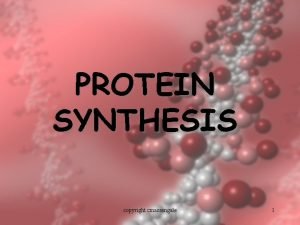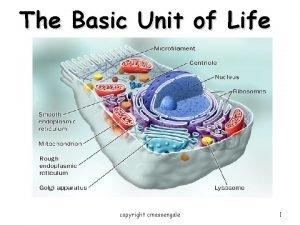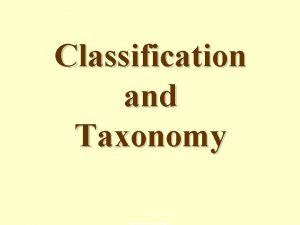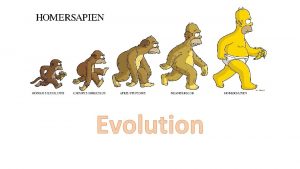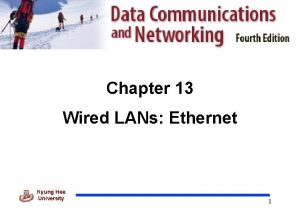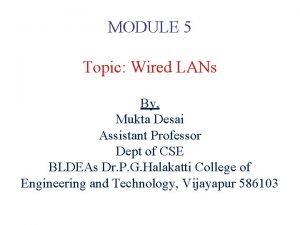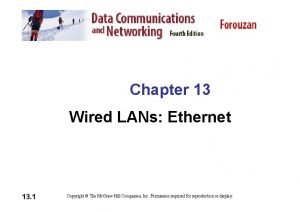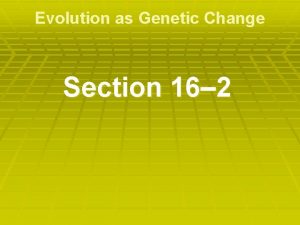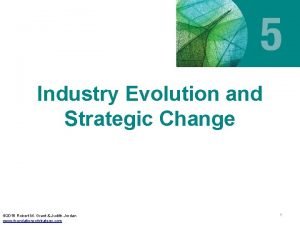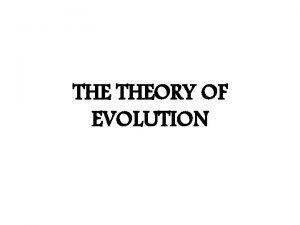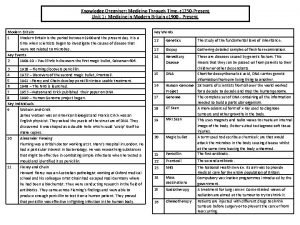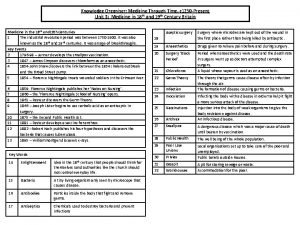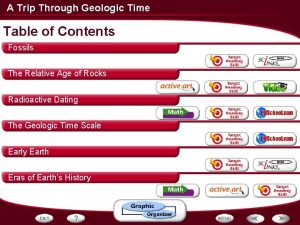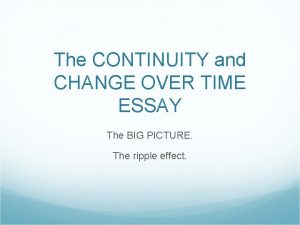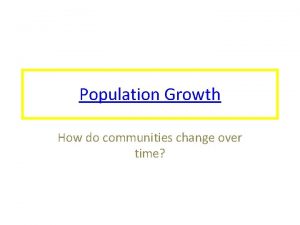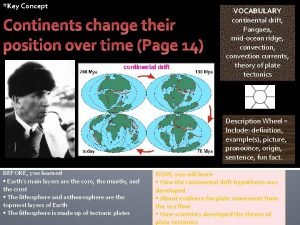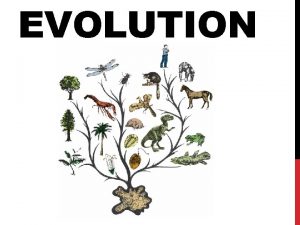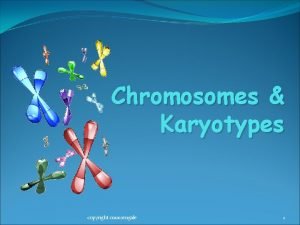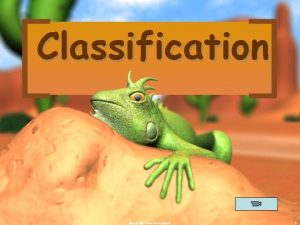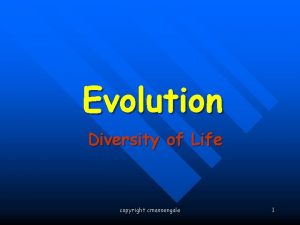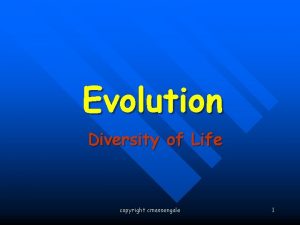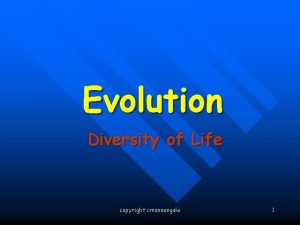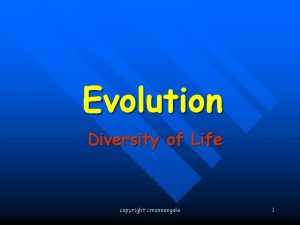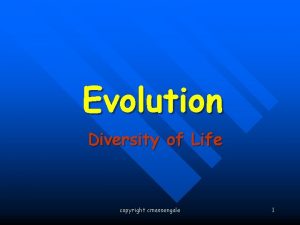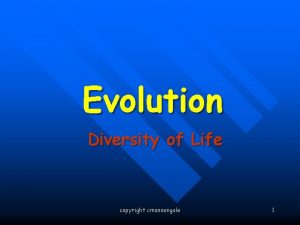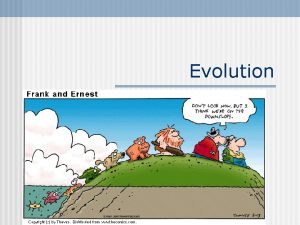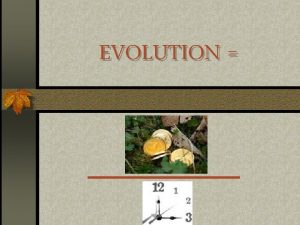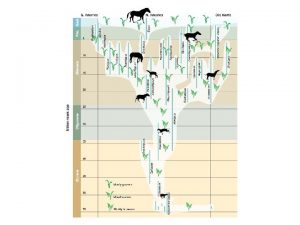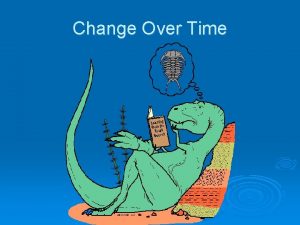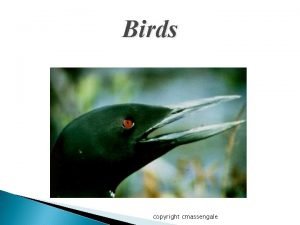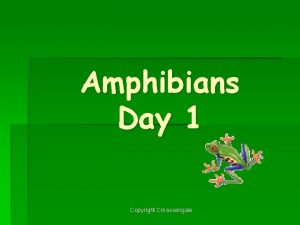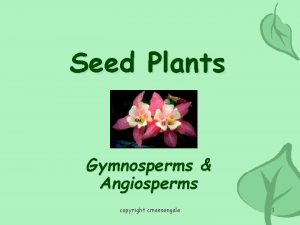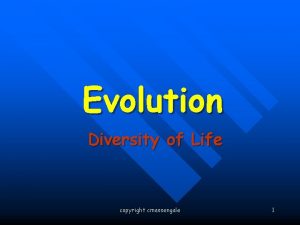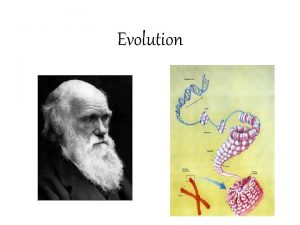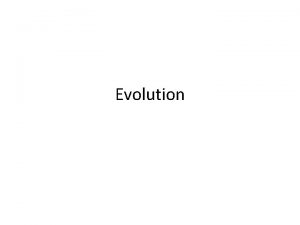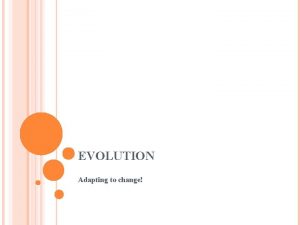Evolution Change through Time copyright cmassengale 1 What










































- Slides: 42

Evolution Change through Time copyright cmassengale 1

What You Should Know How To Explain at End of Unit… copyright cmassengale 2

Evolution and Biodiversity Central Concepts: 1. Evolution is the result of genetic changes that occur in constantly changing environments. Over many generations, changes in the genetic make-up of populations may affect biodiversity through speciation and extinction. (CHANGE IN POPULATION THROUGH TIME) copyright cmassengale 3

2. Explain how evolution is demonstrated by evidence from the fossil record, comparative anatomy (embryos), genetics, molecular biology, and examples of natural selection. copyright cmassengale 4

3. Describe species as reproductively distinct groups of organisms. Recognize that species are further classified into a hierarchical taxonomic system (kingdom, phylum, class, order, family, genus, species) based on morphological, behavioral, and molecular similarities. Describe the role that geographic isolation can play in speciation. copyright cmassengale 5

4. Explain how evolution through natural selection can result in changes in biodiversity through the increase or decrease of genetic diversity within a population. copyright cmassengale 6

History of Evolutionary Thought 7

Early Ideas On Earth’s Organisms • Aristotle believed species were fixed creations arranged by their complexity 8

Early Ideas On Earth’s Organisms • Linnaeus – 1 st to group similar organisms and assign them Latin names • Two word name (Genus species) • Known as Binomial nomenclature copyright cmassengale 9

Taxonomy King Phillip Came Over For Good Spaghetti 10

• • USA MA Taunton Bristol-Plymouth Room # Jennifer Bisch Kingdom Phylum Class Order Family Genus Species copyright cmassengale 11

Lamarck’s Theory of Evolution • Jean-Baptiste Lamarck, 1809 • One Of First Scientists To Understand That Change Occurs Over Time • Stated that Changes Are Adaptations To Environment acquired in an organism’s lifetime • Said acquired changes were passed to offspring (NOT TRUE) copyright cmassengale 12

Lamarck’s Theory of Evolution • Idea called Law of Use and Disuse • If a body part were used, it got stronger • If body part NOT used, it deteriorated 13

copyright cmassengale 14

Charles Darwin 15

Voyage of the Beagle Charles Darwin • Born Feb. 12, 1809 • Joined Crew of HMS Beagle, 1831 16

Darwin Left England in 1831 Darwin returned 5 cmassengale years later in 1836 copyright 17

The Galapagos Islands • Volcanic islands off the coast of South America • Island species varied from mainland species & from island-to-island species • Each island had long or short neck tortoises copyright cmassengale 18

copyright cmassengale 19

The Galapagos Islands - Finches • Finches on the islands resembled a mainland finch • More types of finches appeared on the islands where the available food was different (seeds, nuts, berries, insects…) • Finches had different types of beaks adapted to their type of food gathering (speciation) 20

copyright cmassengale 21

Darwin’s Observations & Conclusions The Struggle for Existence copyright cmassengale 22

Definition • Evolution is the slow , gradual change in a population of organisms over time copyright cmassengale 23

Darwin’s Conclusion • Production of more individuals than can be supported by the environment leads to a struggle for existence among individuals • Only a fraction of offspring survive each generation • Survival of the Fittest through Natural Selection 24

DAY 2 copyright cmassengale 25

Evidence Supports… • Either: – EVOLUTION – change over time – DESCENT WITH MODIFICTION • (We came from a common ancestor, but, have changed through time based on our environment. ) copyright cmassengale 26

Common Descent with Modification • Darwin proposed that organisms descended from common ancestors • Idea that organisms change with time, diverging from a common form • Caused evolution of new species (speciation) 27

Descent With Modification copyright cmassengale 28

Evolution By Natural Selection Concepts • The Struggle for Existence (compete for food, mates, space, water, etc. ) EVOLUTION • Survival of the Fittest (strongest able to survive and reproduce) Natural Selection • Descent with Modification (new species arise from common ancestor replacing less fit species) copyright cmassengale 29

Natural Selection • Cannot Be Seen Directly • It Can Only Be Observed As Changes In A Population Over Many Successive Generations – Radiation – Fossil Record 30

Speciation • The formation of new species Results from: • Genetic Drift (HAPPENS BY ACCIDENT) • Gene Flow • Temporal isolation • Geographic Isolation (MOVEMENT IN OR OUT) (TIMING OFF) (SEPARATED) 31

copyright cmassengale 32

Theory of Evolution Today Evidence copyright cmassengale 33

Fossil Record • Earth is Billions of Years Old • Fossils In Different Layers of Rock (sedimentary Rock Strata) Showed Evidence Of Gradual Change Over Time 34

Similarities in DNA Sequence (molecular evidence) best one! 35

Analogous & Homologous Body Structures They have separate evolutionary origins, but are superficially similar because they have both experienced natural selection that shaped them to play a key role in flight (lived in similar environment). Analogies are the result of convergent evolution They have traits that are similar because they were inherited from a common ancestor Divergent Evolution

Convergent Evolution • Process whereby organisms not closely related independently evolve similar traits as a result of having to adapt to similar environments or ecological niches. Divergent Evolution • Process whereby organisms closely related independently evolve different traits as a result of having to adapt to different environments or ecological niches. copyright cmassengale 37

Homologous Structures 38

Vestigial Organs – Vestigial Organs • Appendix In Man • Hip bone in whale 39

Embryonic Evidence • Embryonic Structures Of Different Species Show Significant Similarities • Embryo – early stages of vertebrate development copyright cmassengale 40

Evidence for Evolution - Comparative Embryology Similarities In Embryonic Development copyright cmassengale 41

Modes of Selection • Stabilizing Selection – average trait is advantageous • Disruptive Selection – both extremes are advantageous • Directional Selection – one extreme is advantageous copyright cmassengale 42
 Cmassengale
Cmassengale Cmassengale
Cmassengale Taxons
Taxons Natural selection
Natural selection Four generations of ethernet
Four generations of ethernet Ethernet evolution through four generations
Ethernet evolution through four generations Mukta desai
Mukta desai First ethernet
First ethernet Start time, end time and elapsed time
Start time, end time and elapsed time Section 16-2 evolution as genetic change
Section 16-2 evolution as genetic change Industry evolution and strategic change
Industry evolution and strategic change Model of evolution showing slow change
Model of evolution showing slow change Through one man sin entered the world, and through one man
Through one man sin entered the world, and through one man Classes of furcation
Classes of furcation Disadvantages of tangential sawing
Disadvantages of tangential sawing Night of scorpion summary
Night of scorpion summary Leading through change presentation
Leading through change presentation Examples of physical changes
Examples of physical changes Examples of physical change
Examples of physical change Absolute change and relative change formula
Absolute change and relative change formula Integer number
Integer number Differences between physical and chemical changes
Differences between physical and chemical changes Input and output market
Input and output market Supply and demand curve shifts
Supply and demand curve shifts Change your water change your life
Change your water change your life Reactive change is change that
Reactive change is change that What is a physical change
What is a physical change Spare change physical versus chemical change
Spare change physical versus chemical change Rocks change due to temperature and pressure change
Rocks change due to temperature and pressure change Whats physical change
Whats physical change How does a physical change differ from a chemical change? *
How does a physical change differ from a chemical change? * What is an example of physical change
What is an example of physical change First order vs second order change
First order vs second order change Is chopping wood physical or chemical
Is chopping wood physical or chemical Climate change 2014 mitigation of climate change
Climate change 2014 mitigation of climate change Gates of time
Gates of time Medicine through time knowledge organiser
Medicine through time knowledge organiser Medicine through time knowledge organiser
Medicine through time knowledge organiser Geologic time
Geologic time Continuity and change over time essay example
Continuity and change over time essay example Density independent factors examples
Density independent factors examples Continents change position over time
Continents change position over time The gradual change in a species over time
The gradual change in a species over time
